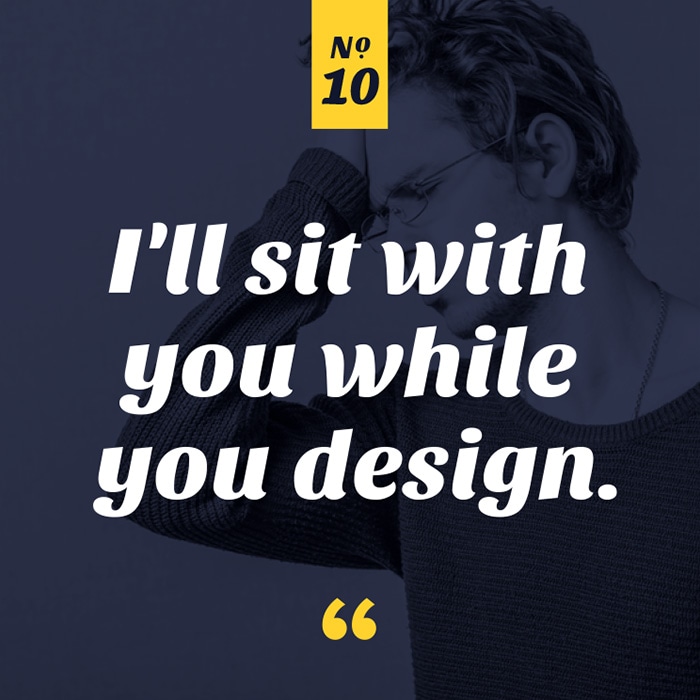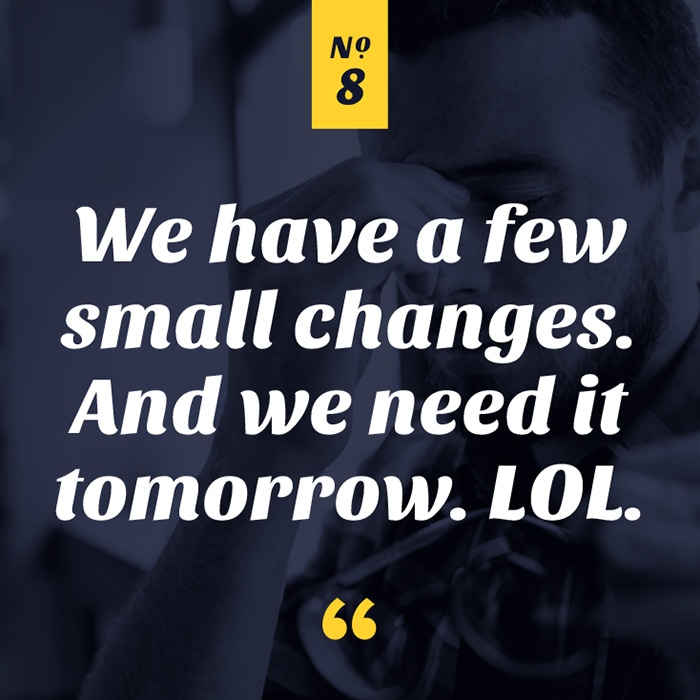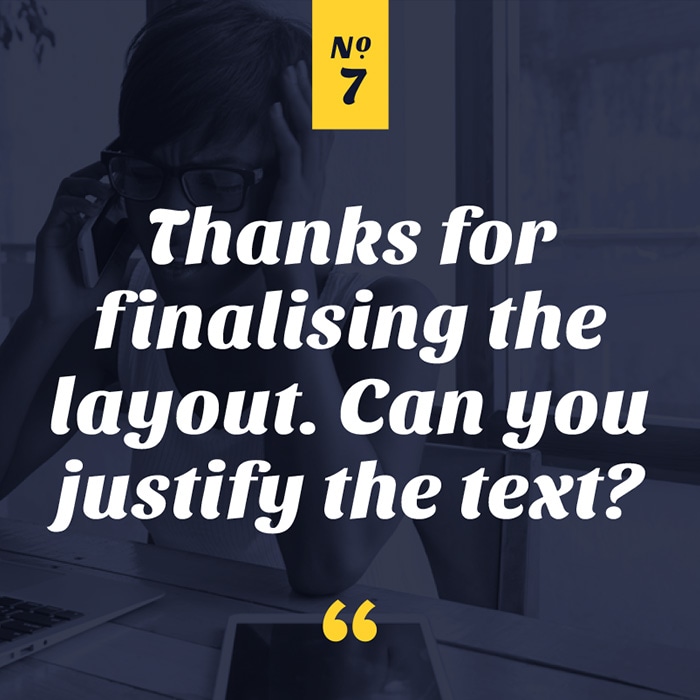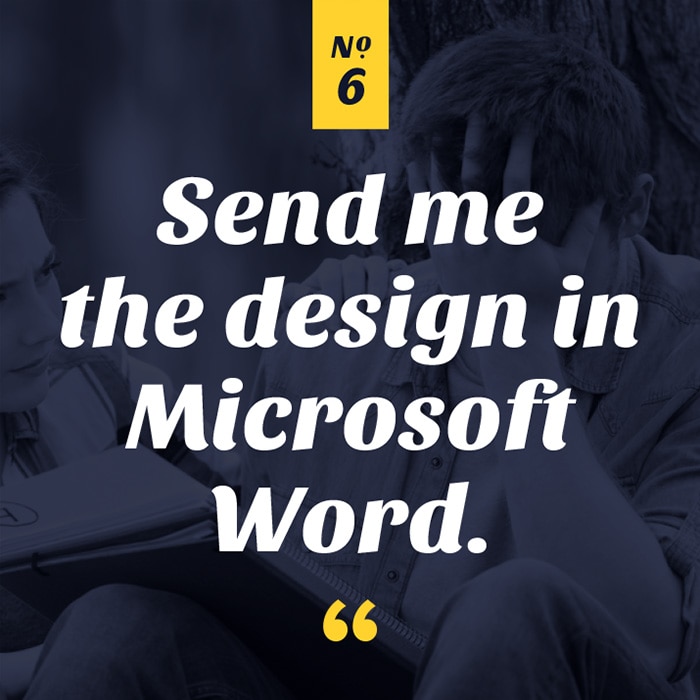10 things never to say to a Designer: Part 1

Before we get too far into the ‘Designer pity party’, we admit that deciphering design-speak can be challenging; we are often muddled ourselves. Communicating with creatives isn’t easy as they have an unconventional way of looking at the world that, in turn, brings a different set of skills to the branding table. They devise unimaginable solutions to complex problems; it’s the way they’re wired. But because of this way of thinking, communications between client and designer are often a source of frustration for either one or both parties. Hence our whinge.
Everyone has, at one time or another, taken part in an eye-rolling conversation between a group of industry-related professionals. You know the type of ‘work rant’ I’m referring to; Nurses complaining about their long hours, covered in blood and poop; Primary School Teachers, covered in… actually, pretty much the same; Childcare Workers… well, you get the idea. Thankfully, the design industry has managed to stem the amount of faeces in the profession; nevertheless, certain issues will always give Graphic Designers the shi… vers.
A sure way to remove yourself from the butt, of the design industry variant, of these conversations, is to be precise with your communication. ‘I don’t like it’ simply doesn’t cut it. Ask the correct questions and give detailed feedback to speed up the project and create an impressive final result — rather than demand alterations or make assumptions that bring the project to a screeching halt.
We passed the hat around the Argon office and compiled our list of the ‘top 10 things never to say to a Designer.’ Here, to break you in, are numbers 10-6. We’ll try to be gentle.

First and foremost, this isn’t a school project. And secondly, no, you can’t look over my shoulder as I painstakingly redesign your artwork. Imagine instructing your accountant, mechanic, lawyer or plumber as they went about their work. Not only does it wreak of unprofessionalism, but the outcome of the job might be jeopardised as a result. Sometimes, I grant you, working on-screen with a designer may be advantageous, but this is always at their discretion, often to break a stalemate in the design process.

Hats off to whoever designed the logo for the Adelaide-based espresso franchise Cibo. We comprehensively receive more style requests for this brandmark than any other; it’s not even a contest. The reason this logo works so well is that their concise name, ‘Cibo’, and the consistency of their brand, are represented effectively throughout their collateral. If you are after a similar brand presence, you may want to ditch the ‘bespoke professional business consulting solutions and advice group’ supporting text attached the backend of your company name. While this text may be relevant to the brand, it isn’t succinct enough to be a part of your logo.

Trust me, a designers’ schedule is always busy; often hectic. Whole weeks, even fortnights, sometimes months (ask our Web Team) are already booked far in advance; ‘free time’ is at a premium. So, these ‘small changes’, particularly those involving website coding or Photoshop editing, can potentially sap hours out of an already full day. Yes, designers sometimes squeeze in updates throughout the course of their week but don’t take it for granted. It shouldn’t be an expectation that project alterations are crammed in the sweet, precious time they have remaining.

After meticulously lining up all the paragraphs, images and branding elements, stylizing the titles and body text, then squeezing in the extra content that wasn’t even in the initial layout brief — they pull the old ‘justify the text’ trick. For those who aren’t aware, ‘justified text’ stretches words to create spaces within paragraphs until the edges of the columns form a straight visual line. It’s true, the page is undeniably neater from a distance, but the text is considerably more challenging to follow. This technique is often used in newspaper layouts; lots of information, tight gutters, built for data, not for brands.

This one gets me every time. Unless the project was stipulated as a Microsoft template, from the initial quote, updating the file isn’t a one-click job. Design program evolution has far surpassed the neanderthalic capabilities of Microsoft Word and, as a result, save creatives bundles of time, energy and what’s left of their dwindling sanity. Unfortunately, Microsoft Word is still the most accessible and recognised ‘text editing’ program for most companies, so it’s with a great and lasting regret that designers are obliged to use the platform to design certain projects. Just remember, express your interests for an interactive file at the beginning of the job; there might be a better alternative to Word.
You can find our top 5 things never to say to a Designer here.
Let's start a conversation
Contact us today if you have any questions or would like to start the journey. Our friendly and experienced team are here to help!

